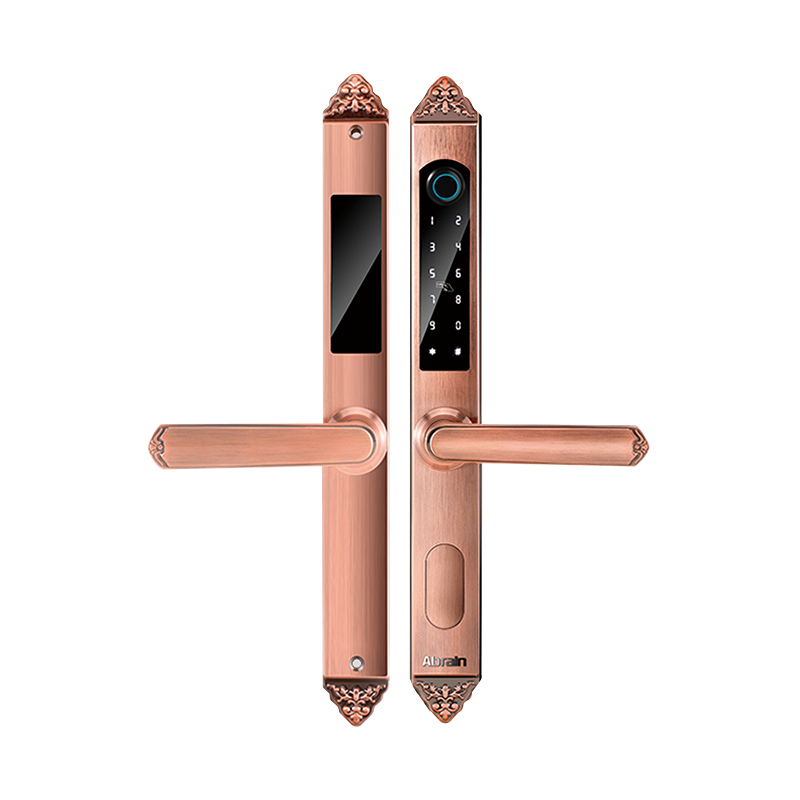A Comprehensive Introduction to Double-sided Fingerprint Lock
Unlike traditional mechanical locks or even single-sided fingerprint locks, the double-sided fingerprint locks version offers a seamless access experience for authorized users, whether they are entering or leaving a secured area.

The lock uses fingerprint recognition technology, which identifies individuals based on their unique fingerprint patterns. When a user places their finger on the sensor, the system captures the fingerprint image and compares it with the stored templates in its database.
If the fingerprint matches a registered profile, the lock's motor mechanism disengages the bolt or latch, allowing the door to open. The double-sided design simply means there are two fingerprint sensors—one on the outside and one on the inside—each connected to the same locking mechanism.
Many models incorporate additional authentication methods, such as PIN codes, RFID cards, or mechanical keys, to offer alternative access options and improve overall security.
Key Features and Benefits
Double-sided fingerprint locks offer a range of features and advantages that distinguish them from other locking systems:
1. Enhanced Security
Fingerprint recognition is difficult to duplicate, making biometric locks inherently more secure than traditional key or code-based systems. The double-sided configuration further increases security by ensuring that only registered fingerprints can unlock the door from either side.
2. Convenience and Accessibility
With fingerprint sensors on both sides, users can unlock doors quickly without fumbling for keys or remembering PIN codes. This is especially useful for homes or offices where multiple people frequently enter and exit.
3. Keyless Operation
Eliminating the need for physical keys reduces the risk of lost or stolen keys and unauthorized duplication. It also simplifies access management, as administrators can easily add or remove authorized fingerprints without changing locks.
4. Durability and Weather Resistance
Many double-sided fingerprint locks are designed to withstand harsh environmental conditions, with weatherproof and tamper-resistant materials that ensure reliable operation indoors and outdoors.
5. Multiple Unlocking Methods
To accommodate different user preferences and emergencies, these locks often support additional methods such as PIN entry, RFID cards, or emergency mechanical keys.
6. Audit Trail and User Management
Advanced models record access logs, showing who unlocked the door and when. This feature is valuable for offices or restricted areas where monitoring entry is important.
Applications of Double-sided Fingerprint Locks
The versatility of double-sided fingerprint locks makes them suitable for various settings:
Residential Use: For homeowners seeking a modern, secure alternative to traditional locks. It enhances safety without compromising ease of access.
Office Buildings: Provides secure entry for employees and visitors, often integrated with broader access control systems.
Commercial Facilities: Retail stores, warehouses, and data centers benefit from biometric security to restrict unauthorized access.
Healthcare and Laboratories: Sensitive environments where controlled access is critical.
Hotels and Hospitality: Offers guests convenient keyless entry, improving user experience.
Factors to Consider When Choosing a Double-sided Fingerprint Lock
To select a suitable double-sided fingerprint lock, keep the following in mind:
Fingerprint Sensor Quality: Look for sensors with high accuracy and fast recognition speed to reduce false rejections and acceptances.
Storage Capacity: Consider how many fingerprints the lock can store, especially for locations with many users.
Power Supply and Backup: Battery life and backup options are essential to avoid lockouts during power failures.
Installation Requirements: Ensure the lock fits your door type and size, and check if professional installation is needed.


